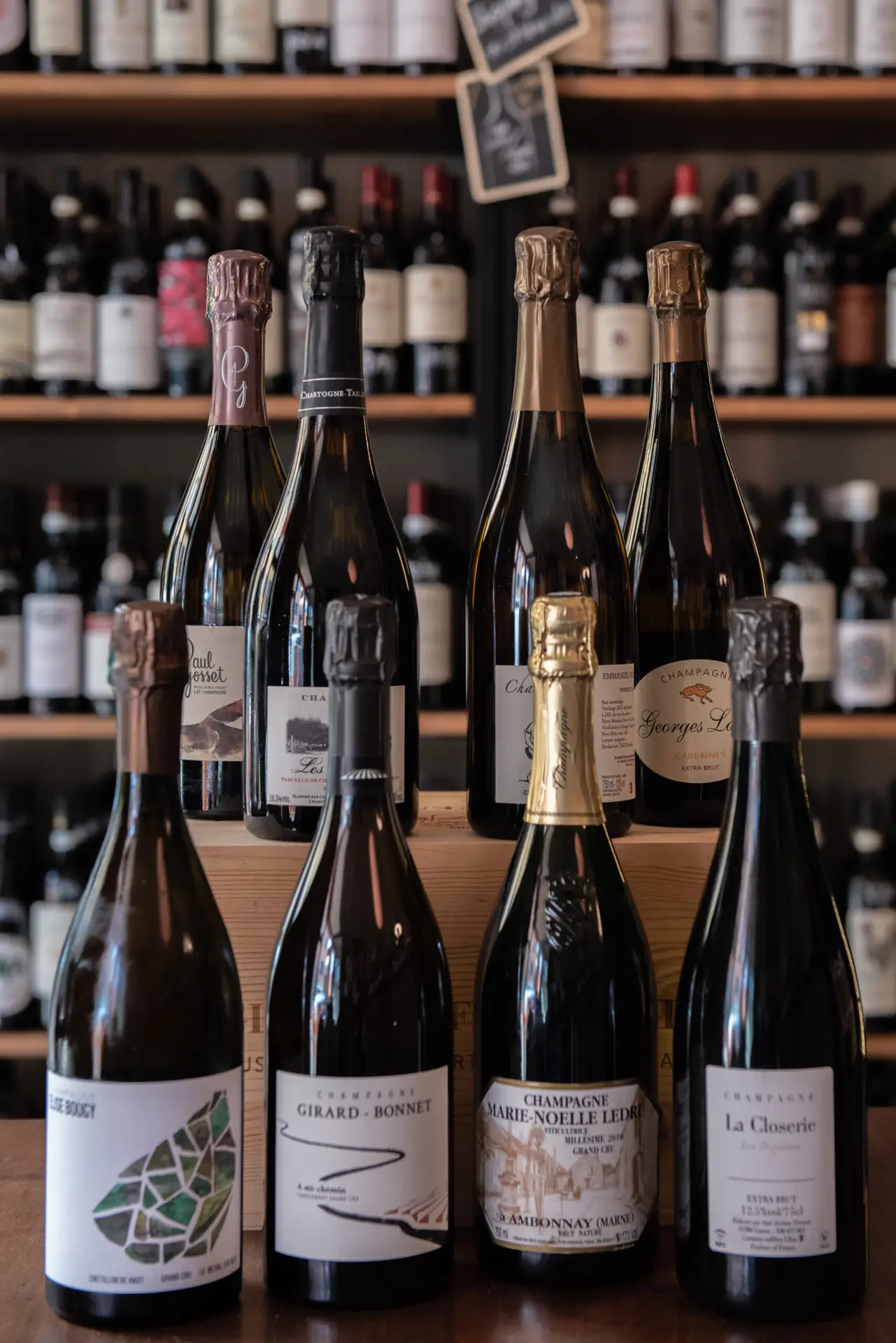In the wine world of today such a word as modern often bears a meaning which is very far from the one, we give it to it in a non-wine-related context. Generally, with modern we intend something up to date and, intrinsically, it’s related to an idea of technologically made item. In the wine world when use the term modern we refer to something quite different.
As it happens with wines from Burgundy, or Langhe or especially from Champagne we use the term modern to refer to wines which has been produced with less intervention as possible and aim at conveying a sense of place more than a sense of process. Most of the times we use the term modern to describe wines made from grapes farmed in very ancient ways: soiled worked with a plough carried by horses, practices dictated by the lunar cycles, use of natural elements to help the plant find its own balance without any chemical inputs.
But that it is not enough to clarify what we intend for modern wine.
Let’s have a look at the Champagne region.
After the big exponential growth of the last mid-century, champagne as a wine has had very fast and radical revolutions, and they happened faster than in any other wine regions. Up to the mid 90s Champagne was a wine of process more than of place. Winemakers just worked to bring home as many grapes as possible and as healthy as possible from the vineyard and then, voila’, the champagne was made, somehow! Over the past two decades there has been a significant shift in the attitude of winemakers; horrified by the disaster of the post-war chemical agriculture that devitalized thousands of hectares of soils, nowadays one of the most shared knowledge and effort is to improve farming practices in order to improve the soil’s vitality. Everyone understood that to make a good wine a better, healthier soil is needed!
Notably, this paradigmatic and epistemological shift was carried on by small producers, like Georges Laval that in 1971 was among the first small maison to be certified organic, unique at the time. Contemporarily with a more sensitive approach to the farming methods it grew a bigger focus on vinification of small parcels to understand the quality of every plot.
The shift was being completed: from the cellar to the vineyard. A rediscover of Champagne soils was needed.
Another big change occurred in the last decade this time regarding vinification: the return of oak. Until the pre-industrial winemaking era everyone used oak barrels to vinify and age wines, and this was because they were the only known containers. In-between the 60s and 70s almost all barrels were replaced by the stainless-steel tanks which were containers easier to clean that didn’t need to be replaced and prevented from any risks of oxidation or defects. Yet today, the return to oak fermentation is widely spread and this is because, as a natural element, the oak allows for micro-oxygenation, a process through which the wine breathes, evolves and gains complexity and dimension. Another trend, reinforced by the success of the natural wine movement, is the use of indigenous yeasts to start fermentations since it is believed they play a fundamental role in expressing terroir, and expressing terroir is the fundamental role of these modern champagnes! In order to do so producers understood that the best way to achieve that goal was by producing great wines in the first place (the ones called vins claire) and these are the actual ingredients: a sustainable viticulture that aim at strengthening the plant defenses and enriching the ecosystem; parcellation of the cuvées to understand every soils potentials; fermentation with indigenous yeasts; longer time on the fine lees of the wine after fermentation in order to increase depth, volume and complexity.
We are dedicated-modern-champagne lovers and in our shop, there is a wide selection of small producers who have contributed to this lively and wonderful revolution whose success we hope will foster many other wine regions to adopt the same practices and knowledge.
Among the most representative exponents of this movement and most sought-after producers we work with : CHARTOGNE-TAILLET, PIERRE GERBAIS, MARGUET, JULES BROCHET, LEGRAND-LATOUR, GEORGES LAVAL, EMMANUEL BROCHET, VOUETTE & SORBÉE, DAVID LÉCLAPART, JACQUES LASSAIGNE, AURÉLIEN LURQUIN.

